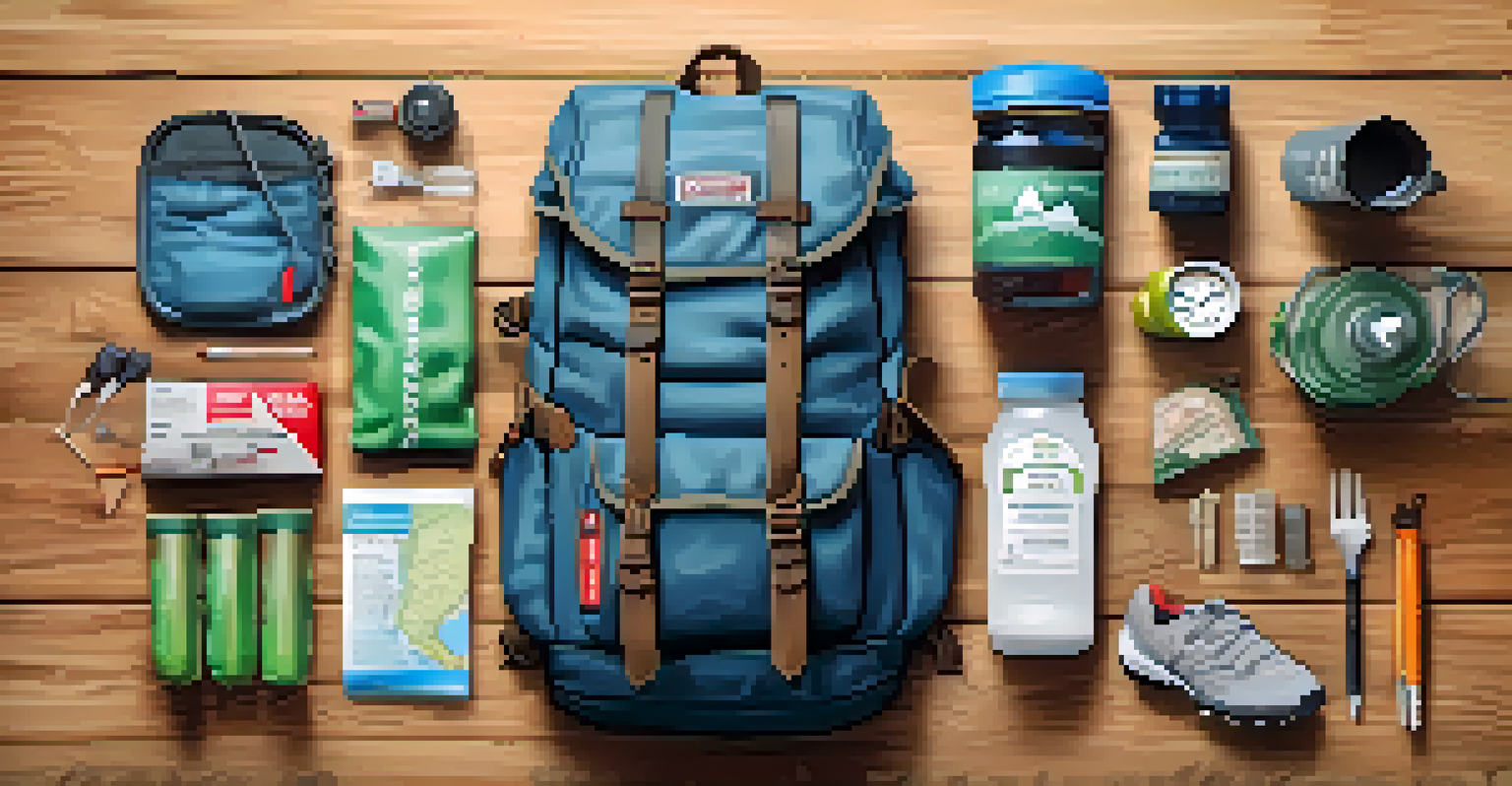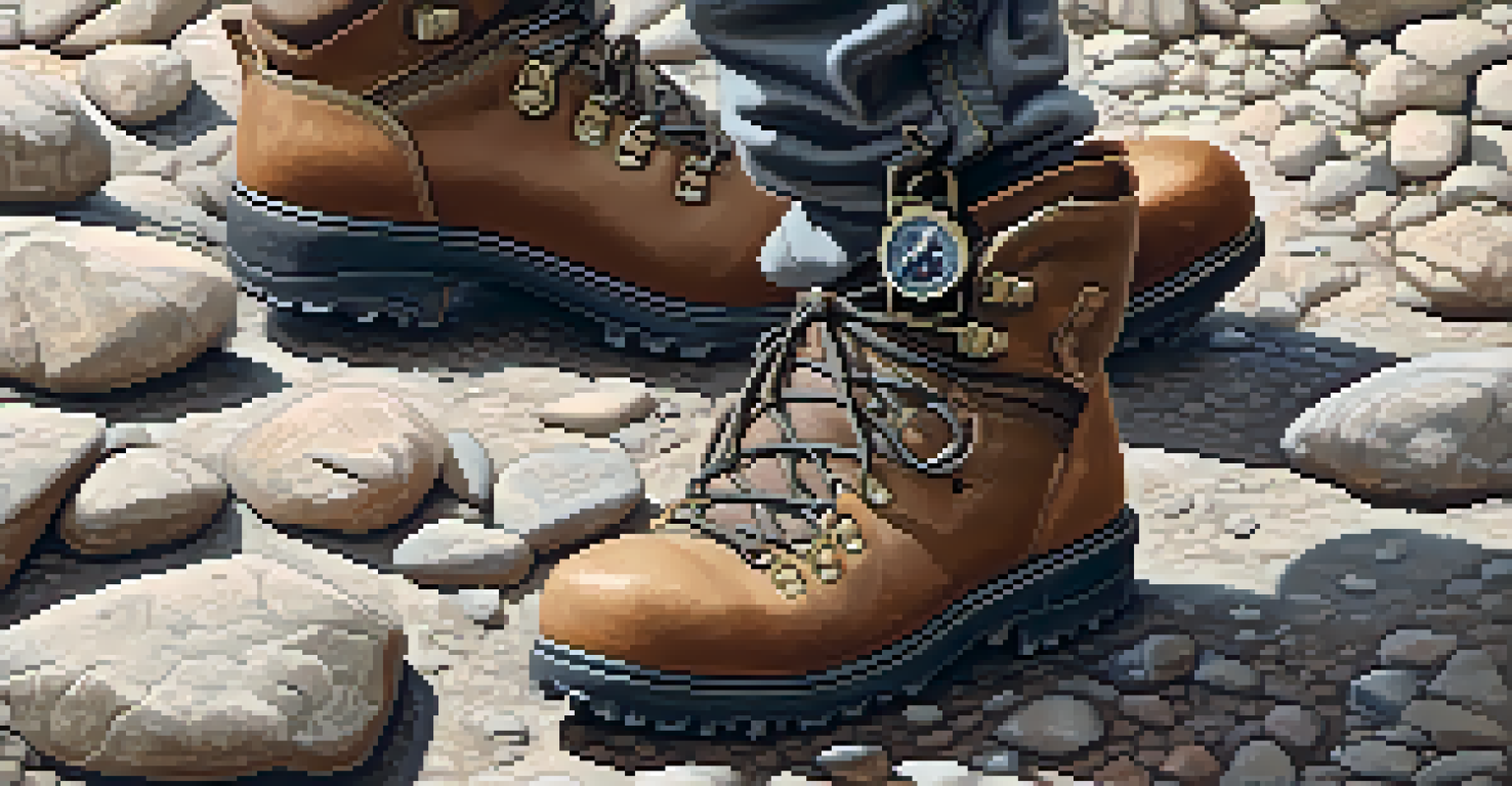Essential Packing Tips for Your Next Hiking Adventure

Choose the Right Backpack for Your Needs
Selecting the right backpack is crucial for a successful hiking trip. Look for a pack that fits comfortably and has enough capacity for your gear. Remember that a good backpack can make the difference between enjoyment and discomfort on the trail.
The mountains are calling and I must go.
Consider the type of hiking you'll be doing. If it’s a day hike, a smaller daypack will suffice, while longer trips may require a larger backpack with more features. Check for adjustable straps and a hip belt for added support.
Lastly, ensure your backpack is made from durable, weather-resistant materials. This will help protect your gear from unexpected weather changes, keeping you comfortable and prepared for anything that comes your way.
Pack Smart: Prioritize Essentials First
Packing smart means knowing what you absolutely need and what can be left behind. Start with the essentials: water, food, first aid kit, and navigation tools. These items are non-negotiable and should be easily accessible.

Once you have your essentials, think about the conditions you’ll face on the hike. If the weather is unpredictable, pack layers of clothing, including a waterproof jacket. It’s better to have extra layers than to be caught unprepared in the cold.
Choose the Right Backpack
Selecting a comfortable, durable backpack tailored to your hiking needs enhances your overall experience on the trail.
Finally, don’t forget about the little things that can enhance your experience. A lightweight camera or a journal can help capture your adventure, but make sure they’re not taking up too much space or adding unnecessary weight.
Stay Hydrated: Water Bottles and Filters
Staying hydrated while hiking is paramount, and how you carry water can make a big difference. Consider using a hydration reservoir or water bottles that fit easily in your backpack. This allows you to sip water on the go without stopping frequently.
In every walk with nature one receives far more than he seeks.
Additionally, if you're hiking in areas without reliable water sources, portable water filters or purification tablets are lifesavers. This ensures you can refill your bottles with safe drinking water when needed.
Remember to drink water regularly during your hike, even if you don’t feel thirsty. Dehydration can sneak up on you, especially during strenuous activities, so make it a habit to hydrate often.
Food Choices: Pack Lightweight and Nutritious Snacks
When it comes to food, lightweight and nutritious snacks are your best friends on the trail. Think energy bars, nuts, and dried fruits that provide quick energy without weighing you down. You want to fuel your body without feeling sluggish.
Avoid packing items that require cooking or complicated preparation. Instead, opt for snacks that are ready to eat right out of the bag. This not only saves time but also reduces the need for extra cooking gear.
Pack Smart with Essentials
Prioritize important items like water and food while considering weather conditions to ensure a safe and enjoyable hike.
Lastly, don’t forget to pack a small trash bag to carry out any waste. Leave no trace is an important principle in hiking, and being responsible with your food packaging helps protect the beautiful landscapes you’re exploring.
Clothing: Dress for Comfort and Weather
Choosing the right clothing for your hike is essential for comfort and protection. Always dress in layers; this allows you to adjust your clothing according to the temperature and your activity level. Start with a moisture-wicking base layer to keep sweat away from your skin.
Next, consider adding an insulating layer, such as a fleece, and a waterproof outer layer if the forecast calls for rain. This layering system keeps you warm and dry without making you overly hot.
Also, don’t forget about accessories like hats and gloves for colder hikes. Good footwear is equally important; invest in a pair of comfortable, well-fitted hiking boots to support you on uneven terrain.
Navigation Tools: Maps and Compasses
Even in the age of smartphones, having traditional navigation tools is vital. A physical map and compass can be lifesavers if your device loses battery or signal. Familiarize yourself with how to read them before your hike.
Additionally, consider downloading offline maps on your smartphone as a backup. Many hiking apps provide detailed trail information, which can be incredibly useful while on the trail.
Embrace Leave No Trace Principles
Following Leave No Trace principles helps you minimize your environmental impact and preserve nature for future hikers.
Always know your route ahead of time and share it with someone who isn’t going with you. This ensures that someone knows where you are supposed to be in case of an emergency.
Emergency Gear: Be Prepared for the Unexpected
Packing emergency gear might not be the most exciting part of your preparation, but it’s one of the most important. A basic first aid kit should include band-aids, antiseptic wipes, and any personal medications. It’s better to be over-prepared than under-prepared.
Also consider packing a whistle, a multi-tool, and a flashlight. These items can be invaluable in case of an emergency, whether you need to signal for help or navigate in low light.

Lastly, make sure to familiarize yourself with the gear you pack. Knowing how to use your emergency items can make a big difference if you find yourself in a tough spot.
Leave No Trace: Make Your Adventure Sustainable
As you prepare for your hiking adventure, remember the importance of sustainability. The Leave No Trace principles guide hikers to minimize their impact on the environment. This means packing out everything you bring in, including trash and leftover food.
Choose biodegradable products whenever possible, from soap to toiletries. This helps protect the ecosystems you’re hiking through and ensures that wildlife remains undisturbed.
Lastly, respect wildlife and other hikers. Keeping noise levels down and maintaining a safe distance from animals ensures everyone can enjoy the natural beauty without disruption.